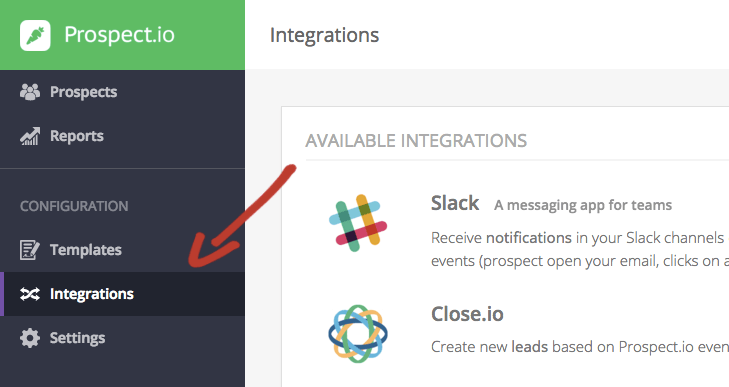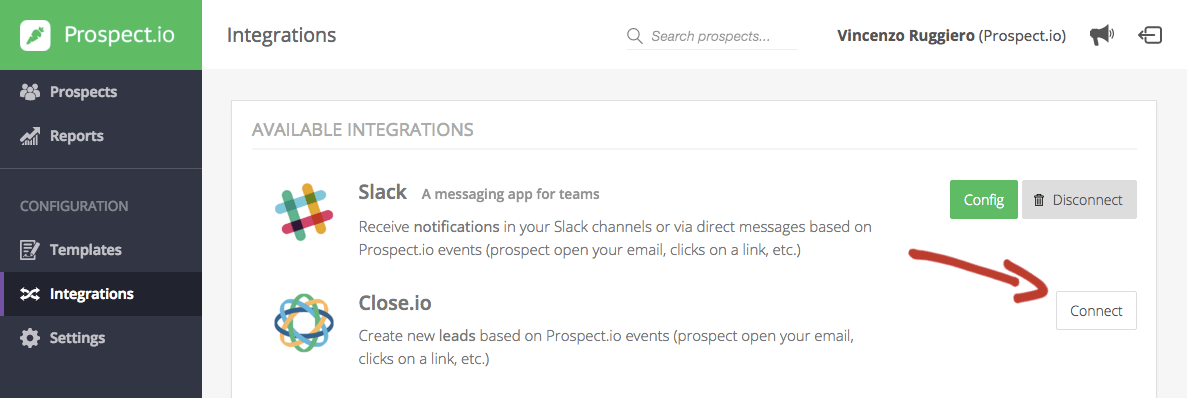No conversion funnel is perfect.
- If any company had found the way to perfectly market their product, every person on Earth would own one.
- Even the biggest, most commercially successful companies are constantly working to improve their conversion rate, and can make some pretty serious mistakes at times.
Spotting the holes in your conversion funnel isn’t always easy – it involves being willing to accept flaws in your marketing strategy and working hard to improve them.
If you’re interested in making improvements to your conversion funnel and increasing your sales revenue in the process, I’ve compiled a list of ten of biggest conversion funnel mistakes that businesses looking to market themselves online tend to make.
How much you get out of this list will depend on how closely you’re willing to look at your own conversion funnel and its weaknesses, so remember:
- There’s nothing wrong with having an imperfect marketing strategy, unless you’re unwilling to improve it.
1. Not Giving Site Visitors a Solid Introduction to Your Business
First impressions are hugely important.
- You need to make sure that all visitors to your site get a solid understanding of what you do, your services, and the benefits that you can provide customers.
A large part of this involves having a series of solid dedicated landing pages which is clearly structured and puts the best foot forward for your company.
Research has shown that this can make a huge impact to the way visitors interact with your site and your business:
- 92% of marketers consider landing pages to be effective

The more landing pages you use, the more leads you’ll generate:
- Websites with over 30 landing pages have 7x more leads than websites with less than 10.
- Websites with more than 40 landing pages generate 12x more leads than those with less than 10 landing pages.

It’s important that users have a hassle-free experience when first arriving on your site.
- The more comfortable your site is to use, the more likely visitors will stick around long enough to learn about your products and progress towards conversion.
The user experience on your site should be as streamlined as possible to help users navigate without frustration.
As such, every aspect of your site should be optimized to help visitors have an enjoyable experience.
- For example, a single second’s delay in loading times for your site will drop your conversions by 7%.
The best way to ensure that your site visitors are getting the best possible experience when they first arrive is through regularly A/B testing and optimizing your website and landing pages.
This will help you to give site visitors an introduction that they’ll be impressed with.
2. Missing/Weak Calls to Action
To convince site visitors to do something, they need to be invited.
- Very few users will be so inspired by your website that they seek you out if there are no clear instructions on what they need to do.
- If your conversion funnel lacks solid calls to action, you’re going to miss out on potential leads.
In spite of the importance of giving your potential customers directions, it’s an element of web design that’s sadly all-too-often overlooked:
- 70% of B2B small business websites don’t have a strong call to action.

A good call to action does several things to encourage user engagement:
- It brings a sense of urgency, convincing the person that they need to do something immediately.
- It is a direct instruction, helping site visitors to know exactly what they need to do.
- It doesn’t require too much effort or commitment, so users will follow through on the action without worrying too hard about potential consequences.
- It uses unique, actionable language, standing out from the rest of the text on a site and drawing the user’s attention to the next step of conversion.
A good online conversion funnel leads users through a chain of calls to action, each one leading to the next step of the process and increasing in commitment.
- A first step involves clicking a link to learn more
- The next can be providing contact details or speaking to a representative
- The final step would be making a purchase.
This is a simple example, but it shows how through leading customers through baby steps you can encourage them to make a purchase, because they’ve already built up a pattern of behavior that involves heeding a call to action.
3. Failing to Follow Up with Leads
Not every lead is ready to convert the moment they contact you.
- It’s easy to see leads as either golden customers or time-wasters, but in reality, all leads fall somewhere on a spectrum between these two extremes.
- Most customers will need some encouragement and persuasion before they’ll commit to conversion.
If a customer initially expresses hesitancy or disinterest when it comes to making a purchase, many marketers don’t like to push them. It’s important, though, to solve leads’ concerns rather than writing them off.
- 80% of leads require five points of interacting with a company before they’ll commit to converting.
- This means it’ll often take patience and persistence to help all leads to progress.
It’s also important to note that the way in which you follow up with leads will affect your success.
- If potential customers have a concern, it’s best to deal with it as quickly and comprehensively as possible.
- Leads who have their issues resolved within five minutes of making a request are 9x more likely to lead to conversion.
It’s important to build a rapport with leads – potential customers need to see your company as human, while also being authoritative, informed and helpful.
You need to build the relationship of trust with leads so that they’ll be more willing to discuss issues with you, and so that they’ll be willing to take the actions that you recommend which will lead to sales.
4. Confusing Funnel Progression
Is your conversion funnel clear and simple?
Or is it possible for customers to get lost along the way?

There are plenty of ways a conversion process can end up getting confusing:
- There are too many steps for a potential customer to take
- Distractions cause website visitors to get lost
- A lack of urgency meaning customers don’t feel that progression is important
To make sure your potential customers convert, you need to get them towards making a sale as quickly as possible.
This means removing any distractions from your sales pitch, and making sure your website is as economical as possible with text, images and information.
- Obviously you need enough for customers to understand why your services will help them.
- That said, any unnecessary links or out-of-place content will only serve to make it more difficult for customers to find their way to the bottom of your sales funnel without getting lost.
Humans learn best through stories, and progressing through the conversion process is no different:
- You need to take your customers on a clearly signposted narrative journey which deals with their concerns and answers their questions about why your product is best.
It’s not always easy to mark out the perfect journey for your customers, which is why constant testing is essential to finding how to point site visitors in the right direction.
Heat maps can be particularly useful in identifying elements of your site which are serving as a distraction:
- If you find that website visitors aren’t being naturally drawn towards the elements on a page that will help them to progress, it’s time to remove or rearrange your distractions.

By providing a clear, simple path for site visitors to take, you can make sure that the maximum number of potential leads travel all the way through your conversion funnel.
5. Not Providing Middle-of-the-Funnel and Bottom-of-the-Funnel Support
In marketing, it’s tempting to simply focus on getting as many people as possible to your website and expect that a percentage of them will progress towards a sale.
- A lot of effort typically goes into widening the sales funnel at the top.
- This can lead to a large drop-off at later points of the funnel.

Potential customers need different information at different points along their conversion path.
If all of your content is aimed at attracting website visitors, there won’t be anything to help address the concerns of site users who are performing research before making a sale and need questions about your products answered.
This means providing support and content throughout the funnel.
- A lot of your potential customers will need this aid – 77% of consumers say that they expect a business to provide research for their needs during various points in the conversion process.
Different content will be needed at different times:
- Providing content for middle-of-the-funnel leads can mean giving details on the product and offering FAQs, while at the bottom of the funnel.
- Potential customers will need more specific support, such as troubleshooting for the product or a breakdown of what to expect when placing an order.
Ideally, you’ll identify in advance what content your leads will need at various stages of the process, and you’ll have it ready and available as soon as they need it.

Focusing efforts on the middle of the funnel may reduce the rush of traffic your content provides, but it can mean for steeper sides on your conversion funnel, and speedier progression towards conversion.
6. Targeting the Wrong Audience
Another problem that can occur when marketers focus too closely on drawing people into the top of the funnel is they end up bringing in a lot of people who just aren’t interested.
- Remember: it’s not the number of visitors to your site that increases your conversions, it’s the number of visitors who are willing to make a purchase.
- Attracting a large audience just for the sake of having higher visitor stats can mean you end up wasting a lot of time dealing with people who are only interested in your content, rather than your products.
The important thing is ensuring that you’re targeting the audience that are most likely to convert.

Finding these people means performing research:
- You need to analyze your existing client base to see who they are, what their needs are and how they were originally drawn to your company
- It can also help to perform wider research on your industry to see what general user needs might be and what communities potential customers frequent
- When all else fails, have a look at the types of people your competitors are advertising to, and consider what you can do to either reach the same audience, or try and find a similar audience with slightly different needs.
Tracking down the appropriate audience can take a fair amount of time in planning, and focusing solely on the right people will probably mean a smaller number of visitors to your site.
That said, a higher percentage of these visitors will be genuinely useful, and you can spend your time focusing on the needs of the people who are actually worth your time.
7. Ignoring or Misreading Analytics Data
One problem that too many companies fall into with attracting people towards their business is failing to properly use the data at their disposal.
- Often, analytics tools can appear difficult to understand, but without studying the numbers behind a campaign it’s difficult to identify areas for improvement.
The wealth of statistics and data available in analytics tools is phenomenal, and when studied at length, it’s possible to see patterns that might not be easily recognized otherwise.
Take, for example, the tool in Google Analytics which allows users to see figures on the behaviors of users with different browsers.
- One study found that a website was enjoying its highest conversion rate with visitors who were using high resolution browsers, and that a low res browser increased users’ bounce rates.
- This suggested that in this particular case, web design issues meant that those with older browsers weren’t able to engage with the website properly, leading to a loss of conversions.

There are plenty of in-depth guides available online which will help you get the most out of your analytics research.
Through using the tools available, it’s possible to spot areas of your conversion process that need an overhaul.
8. Overlooking Marketing Opportunities
There are a lot of different ways to attract people to your business.
- A lot of the time with content marketing, businesses feel that they can simply post their content online and expect people to find it.
- This isn’t the case: thanks to all the noise and competing messages on the internet, unless people are specifically looking for your it’ll be hard for them to find you, unless you advertise.
There are plenty of ways of getting people to see your content and discover your business. This can include:
- Making use of social media tools.
- Reaching out to key market influencers.
- Engaging with important communities.
Often overlooked are the way offline methods of attracting business can help, such as:
- Relying on print advertising, which is often ignored, making it an effective way to stand out from the crowd.
- Meeting potential clients face to face – this is believed to be the most effective form of marketing for B2B businesses.
It’s not enough to stick to the familiar avenues of gaining customers – experimentation and trying new ideas is a key step in finding new, successful methods of attracting the right audience to your business.

9. Treating a Sale as the Completion of the Funnel
You’ve convinced someone to visit your website.
You’ve walked them through the benefits of your products, and after some persuasion, they’ve finally made a purchase.
Congratulations! Job done, right?
Wrong.
If you’re treating a sale as the final step on your conversion ladder, you’re making a big mistake.
If someone’s ‘converted’, it means more than just taking a single action.
You want to encourage people to become lifelong converts to your cause.
- This means continuing to make purchases regularly for a long time.
- It also means convincing them to go out of their way to invite others to experience your products, becoming unofficial sales reps for your company.

Turning a one-off customer into a lifelong customer can be just as difficult as convincing them to make the first sale.
- That said, they’ve already begun to develop a pattern of purchasing behavior, so your job at this stage is primarily to keep them going in the right direction.
To help encourage lifelong support of your company, you need to make sure that your marketing and customer support efforts don’t end once a sale has been made:
- You need to provide support and content aimed around showing customers how to get the most out of their purchase, so that they don’t ultimately feel that their money has been wasted.
- You need to offer high quality, speedy customer support in case anything goes wrong, so that the customer feels more valued and supported by your company.
- It’s important for your social media campaign to reach out to existing customers as well as potential buyers, and give your users a space where they can discuss your products and form a community.
By taking these actions, you’ll increase the chance that customers will continue to buy from you, and will be more confident in sharing your products with all of their friends.
10. Impatience
Finally, probably the biggest mistakes that marketers make is not being patient with new ideas and techniques.
- Rome wasn’t built in a day, and no business can take off without giving each idea a proper time to shine.
Often, businesses will attempt marketing tactics that they see popularized by other, larger companies, but when they don’t see instant phenomenal results, the company will pull the plug on the project, deeming it a failure.
- Many businesses overlook the fact that even for the most successful ad campaign, nothing takes off immediately overnight – sometimes campaigns need room to grow before they’ll being producing successful results.
- This is particularly true of content marketing efforts – it’s common for companies to scrap content plans because they don’t instantly see success.
- A lot of the time, this comes combined with a failure to properly distribute content and advertise the company’s products.
Trying new ideas is a big part of finding a successful online strategy and ironing out the creases in a conversion funnel.
- It’s important to have a balance in this, though: constantly leaping from one idea to the next without giving anything a chance to sink in will mean forever only having the beginnings of a campaign in place.
- The most important step to building a successful conversion funnel is therefore giving each strategy enough time to take off.
While there’s no hard and fast rule to how long a campaign needs before it’ll become a hit, as a general rule I like to give each campaign three times longer than I initially expect it needs before changing it – this way, if an idea does take a little longer to start producing results, I’ll have given it enough time to do so.
These ten points are among the most common – and most destructive – ways that companies can end up harming their conversions.
As I said at the beginning, there’s nothing wrong with having an imperfect conversion funnel.
As long as you’re willing to make improvements where they’re needed, your company can – and will – succeed in drawing in new, lasting clients.
What other mistakes have you made with your website’s conversion funnel? Leave me a comment below with your experiences:
Images: Pixabay, Hubspot, Hubspot, Small Business Trends, Pixabay, Flickr, Crazy Egg, Flickr, Practical eCommerce, Pixabay, Flickr, Flickr





.jpg) "I remember once being asked the difference between hardware and software, and I realised in a moment of panic I had no idea. I worked for IBM and we just sold them stuff and they were grateful or they lost their job. It was a very different time."
"I remember once being asked the difference between hardware and software, and I realised in a moment of panic I had no idea. I worked for IBM and we just sold them stuff and they were grateful or they lost their job. It was a very different time."

















 These four entrepreneurs come for diverse backgrounds and their businesses are all in different industries. But there are some interesting commonalities and insights that can be culled from their stories.
These four entrepreneurs come for diverse backgrounds and their businesses are all in different industries. But there are some interesting commonalities and insights that can be culled from their stories.
 Since 1902, marketers have relied on the Attention-Interest-Desire-Action (AIDA) Model developed by Elias St. Elmo Lewis to understand how consumers learn about and take actions related to brands.
Since 1902, marketers have relied on the Attention-Interest-Desire-Action (AIDA) Model developed by Elias St. Elmo Lewis to understand how consumers learn about and take actions related to brands.



















 How you handle the first 10 minutes of your workday can largely determine how productive and effective you'll be the rest of the day.
How you handle the first 10 minutes of your workday can largely determine how productive and effective you'll be the rest of the day.















 Report: What You Should Know About B2B Referrals
Report: What You Should Know About B2B Referrals



















